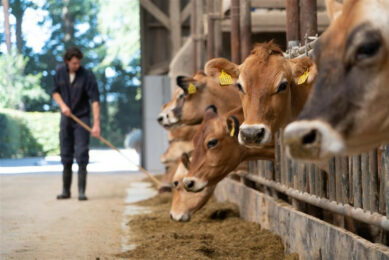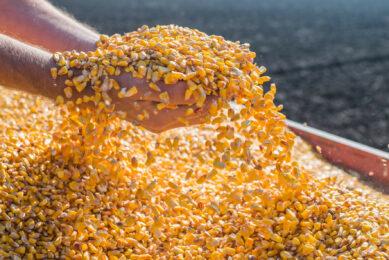5 questions answered on promoting resilience in dairy cows

Prevention in animal health shouldn’t only focus on biosecurity. Resilience in animals should also play a role. That was the key message of the PhD thesis of Dr Ingrid van Dixhoorn, Wageningen University & Research, the Netherlands.
 How would you define resilience?
How would you define resilience?
Resilience is the ability of the animals themselves to deal with deviations, to remain healthy and, in the event that they do fall ill, to recover quickly. So we focus on the animals’ abilities and less on the pathogens or disease causes.
 Why is this so important?
Why is this so important?
We’ve been paying a lot of attention to keeping pathogens out. And obviously, that is very important. Nevertheless, by applying many biosecurity measures we are limiting the animals’ environment which can be very important to support the animals’ intrinsic ability to manage deviations.
So what I have been doing is to zoom in on the question: what is needed to stimulate the animals’ ability? That means looking at the animals’ needs. Because when we look at ‘keeping pathogens out’, the system itself becomes more vulnerable.
 What did you find with dairy cows?
What did you find with dairy cows?
With dairy cows we didn’t specifically research what was or wasn’t better, but we saw that those animals that had a strict day and night pattern were more capable of staying healthy. We call these ‘dynamic indicators of resilience’. So with dairy cows we looked at indicators, and it turned out that animals that were capable of doing that, remained healthier after calving.
If you look at physiology, then this so-called ‘diurnal pattern’ or 24-hour cycle is an important aspect in animal production. What’s more, eating a lot helps, too.
 You also studied resilience in pigs and found there that pigs in enriched environments were more resilient. How do you explain those outcomes?
You also studied resilience in pigs and found there that pigs in enriched environments were more resilient. How do you explain those outcomes?
First of all, the immune system responded differently – we found indications that various values for immune cells were higher, mostly the lymphocytes. Secondly, in a different study into the microbiome, we observed that the microbiome matured more quickly and became more stable and more diverse. Lastly, stress levels were also lower. All 3 aspects influence each other as well, together they are likely to be more effective.
 It all appears super logical, wouldn’t you agree?
It all appears super logical, wouldn’t you agree?
True. If an animal feels better, then it is more capable of dealing with challenges. And quite frankly, it’s remarkable that we need research to demonstrate this. Still. it’s great to see it confirmed in the statistics – it really was a major effect, that you can influence prevention by the choice of husbandry system.










